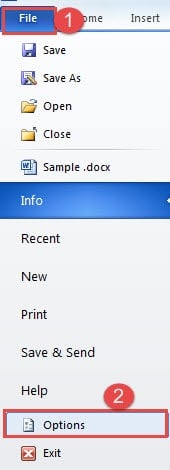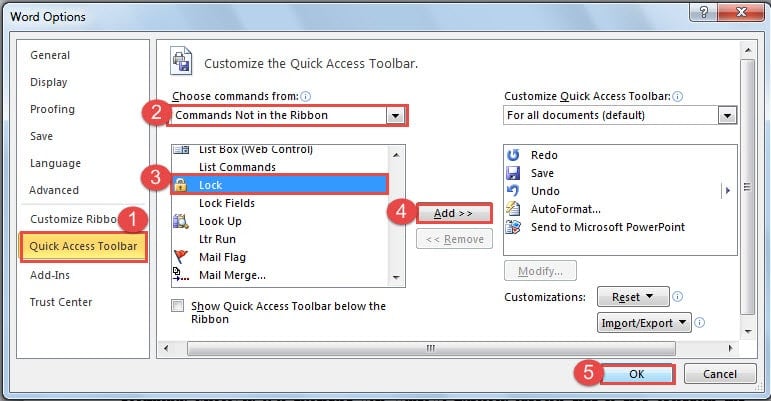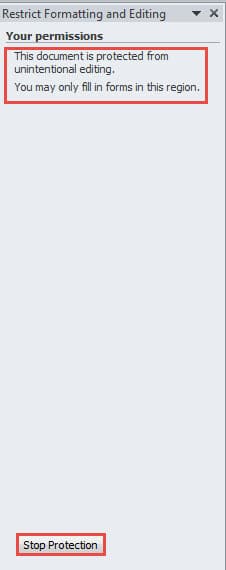In this article, we will go about the way to lock your Word document so as to safeguard file security.
An Alternative Way to Secure Word Files
In our day to day office work, one thing we can never get away is to create various Word documents. Yet in an office environment where people come and go, and some people even share one computer, how can you guarantee your file security and prevent it from being accidentally changed by others? Certainly, taking use of password can well protect your document from being edited. But you have to admit that to access a file by entering password every time can be a little inconvenient despite of its excellent effect of securing file.
As a matter of fact, there is an alternative way that is to lock your document. This method, however, should be employed when you just want to take a temporary protection for your document in a scenario like going out for a short while. And when you come back, no complicated passwords are needed. A simply click or to press keyboard shortcuts can quickly enable you to work on the document again.
Add “Lock” Command to “Quick Access Toolbar”
As we display in the title, to lock document requires the use of “Lock” command. Here are steps to add it to “Quick Access Toolbar”.
- Firstly, click “File” tab in Word.
- Then click “Options”.
- Next in “Word Options” dialog box, you first choose “Commands Not in the Ribbon” for “Choose commands from” list box.
- Next you go find the “Lock” command and click it in group boxes.
- Then click “Add” button.
- Lastly, click “OK” to save the change.
Now you can see the “Lock” command available on “Quick Access Toolbar”.
2 Ways to Lock Your Word Document
Actually, there are 2 ways to lock your file once you successfully add the “Lock” command to “Quick Access Toolbar”.
- The first way, of course, is to click the “Lock” command on “Quick Access Toolbar” when you have to lock a file. Then you will notice the Ribbon area turns into grey and you can no longer use options there.
- The second way is to utilize keyboard shortcuts. Press “Alt” and you will see a number is assigned to each command on the “Quick Access Toolbar”. And a letter is assigned to each tab on the Ribbon. In this case, number “6” is below the “Lock” command.
Therefore , in this case, “Alt+ 6” is the keyboard shortcuts for “Lock” command. By pressing “Alt+ 6”, you can lock the file. The effect is just the same as the first way. Note: “Alt+ 6” only works in this case. You will get a different number assigned to “Lock” command according to the number of commands on your “Quick Access Toolbar”.
When you lock your file and save it, you have to unlock it before starting working on the file again even when you open it on another computer.
3 Ways to Unlock Your Word Document
There are 3 ways to unlock your locked Word file.
- First one is to click “Lock” command on “Quick Access Toolbar”. Then you will be able to use the options on the ribbon.
- Second one is to press “Alt+ 6” in this case to unlock the locked file.
Again, “Alt+ 6” is the keyboard shortcuts in this case. You must make sure of the number assigned to “Lock” command in your Word.
- The third one is to click “Review” tab. Then click “Restrict Editing” in “Protect” group.
Now you can see a task pane is open on the right side of the Word window. On the pane are words indicating this is a locked file. You can click “Stop Protection” button on the bottom of the pane. Then you will be able to edit on the file again.
Comparison of 3 Ways to Unlock Files
| Methods | Advantages | Disadvantages |
| Click “Lock” Command | It’s the quickest way. | You must add “Lock” command to “Quick Access Toolbar” first. |
| Use Keyboard Shortcuts | It’s also a quick way to unlock file when you remember the keyboard shortcuts. | 1. You must add “Lock” command to “Quick Access Toolbar” first.
2. You have to press “Alt” to make sure of the number assigned to “Lock” command. |
| Click “Stop Protection” | 1. You don’t have to add “Lock” command to “Quick Access Toolbar”.
2. You don’t have to remember any keyboard shortcuts.
|
You have to go to “Review” tab to make several clicks which is a little bit time-consuming. |
Sophisticated Repair tool Works for Word Files
When encounter with a corrupt Word file, you can make use of the built-in function in Word to try to get your file back. Yet, in most of the cases, it fails your expectation. Therefore under such circumstances, you should not hesitate to get a specialized tool to repair corrupt doc immediately.
Author Introduction:
Vera Chen is a data recovery expert in DataNumen, Inc., which is the world leader in data recovery technologies, including Excel xlsx problem repair and pdf repair software products. For more information visit www.datanumen.com



 Therefore , in this case, “Alt+ 6” is the keyboard shortcuts for “Lock” command. By pressing “Alt+ 6”, you can lock the file. The effect is just the same as the first way. Note: “Alt+ 6” only works in this case. You will get a different number assigned to “Lock” command according to the number of commands on your “Quick Access Toolbar”.
Therefore , in this case, “Alt+ 6” is the keyboard shortcuts for “Lock” command. By pressing “Alt+ 6”, you can lock the file. The effect is just the same as the first way. Note: “Alt+ 6” only works in this case. You will get a different number assigned to “Lock” command according to the number of commands on your “Quick Access Toolbar”.
